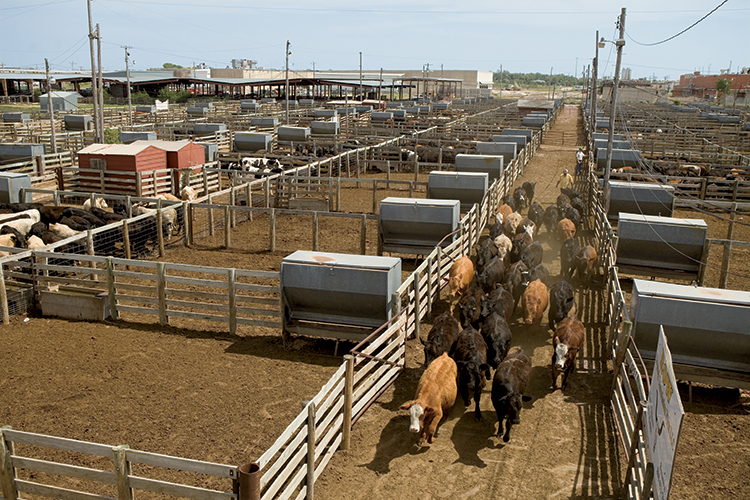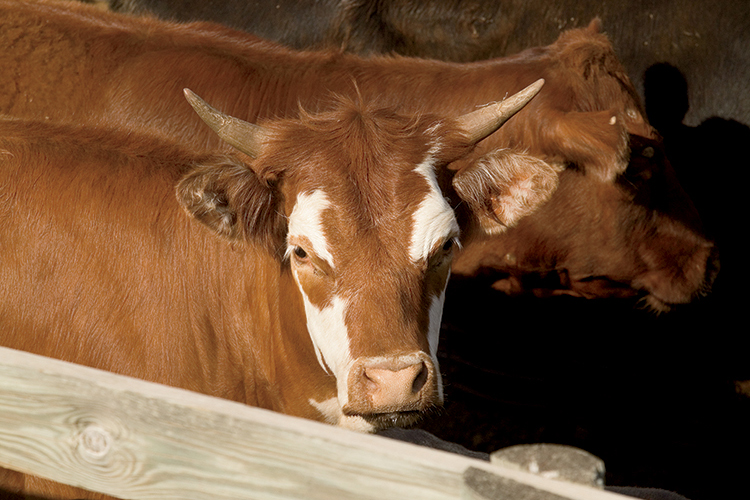Home > Oklahoma > Oklahoma Crops & Livestock > Oklahoma National Stock Yards Survives the Test of Time
Oklahoma National Stock Yards Survives the Test of Time

Since the beginning, the Oklahoma National Stock Yards has been a familiar place for those involved in the meat packing industry.
Just three short years after Oklahoma earned its statehood, Stockyards City was founded on Oct. 3, 1910. The stockyard got its start when Edward Morris and Company formally opened the packing plant and livestock terminal market on 120 acres two miles west of downtown Oklahoma City. It was built as a primary source for the state’s meat processing and packing industry.
At one point in history, the area even earned the nickname “Packingtown,” thanks to the great size of the facilities. W.H. “Bill” May had heard about packing houses and stockyards being built in Oklahoma City and was excited about the idea. At age 40, he had been buying and selling cattle and livestock for many years, following in his father’s footsteps. Bill May began inquiring about having a livestock commission company, prior to the stockyards opening. As he helped finish laying brick and hanging gates, he hung the shingle for the W.H. “Bill” May Livestock Commission Co. in 1910. He continued as president until he turned 95 in 1965. His great-grandson, Roy Don May, now continues the 104-year-old business, which is the oldest livestock marketing company in the U.S.
According to a historical account written by Carol Holderby Welsh, the new livestock complex provided 2,400 new jobs in a city of 60,000.
And in 1961, a second mode of livestock trade through auction was announced, helping companies like May’s participate in even greater competition. Up until that point, livestock sales were handled privately.
May credits the long-term success of his family’s company to the state-of-the-art facilities that included packing plants for cattle, hogs and sheep, giant barns for horses, mules, hay and grain storage.
“Remember, everyone had horses in those days, not tractors and pick-ups,” says May. The company survived World War I, the Great Depression, the Dust Bowl and World War II. “All of those were incredible hurdles to overcome,” he says. “Many businesses failed during those hardest of times. Fortunately, W.H. May adapted and survived.”

Family loyalty, dedicated employees, integrity and loyal customers were all integral parts of survival as well.
“My father, Don May, once told me, ‘Don’t ever do something that you know is wrong and your word will always be good even if you have no money.’ And to remember that no matter how much money you have you can never buy a good reputation.”
Many employees have become family, like Della Mae Perry, working for the family for over 60 years. Some of the family’s cousins have bought and sold with the May organization for six generations.
Roy Don May sees a bright future for the company. “My wife and I have five daughters and three grandsons. They are all supportive and have been involved since very young ages. God’s grace, a little luck and lots of hard work will pave the way for many more years to come with our company.”
He also sees a bright future for cattle producers, especially cow-calf producers.
“Corporations can’t and don’t want to fix fences, pull calves, chop ice and bale hay – that will be left for the ranchers to do. They will always be needed and most likely so will our services for generations to come.”
As for the stockyards, they’re holding strong. Since their inception, more than 102 million head of livestock have passed through the gates. Stockyards City is home to the largest stocker/feeder cattle market in the world, and the venue also holds events throughout the year to sustain its legacy.



